Before converting your propane grill to natural gas, you’ll need to check your grill’s compatibility and purchase a manufacturer-specific conversion kit. Replace the orifices with larger natural gas ones, swap the manifold assembly, and guarantee proper gas pressure at 6-7 inches W.C. using a manometer. Conduct thorough leak tests with soapy water on all connections, then observe flame color for proper combustion—blue flames indicate efficient burning. Continue below to discover the complete step-by-step conversion process.
Check Your Grill’s Compatibility Before Starting the Conversion
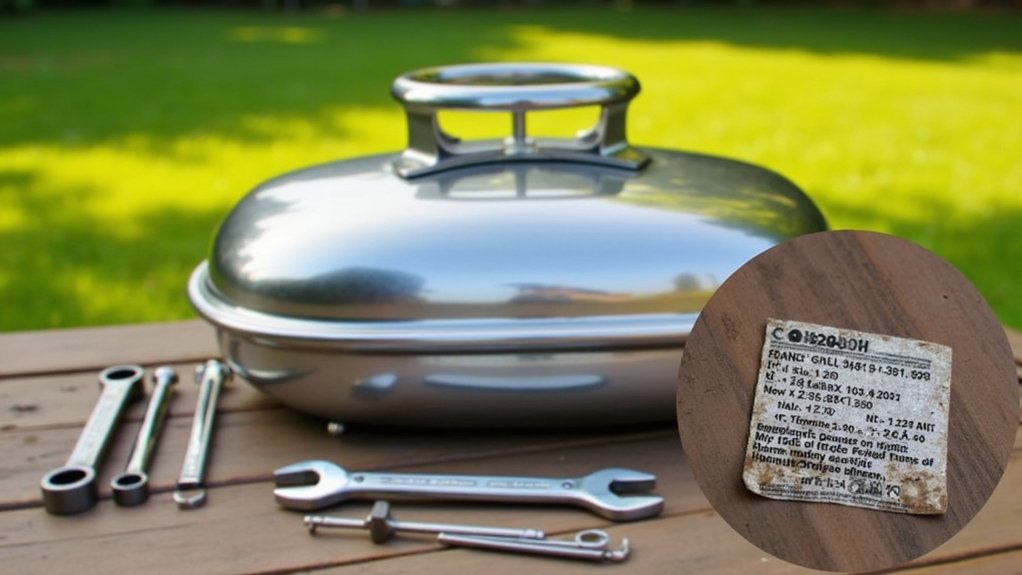
Why risk damaging your grill or creating a safety hazard when a few simple checks can guarantee your conversion goes smoothly?
Before diving into your propane to natural gas conversion, you’ll need to verify your grill’s compatibility. Start by consulting your owner’s manual to confirm your specific model can safely convert to a natural gas grill. Not all grills support this conversion, and attempting it on an incompatible unit creates serious risks.
Next, locate your grill’s rating label to identify the correct conversion kit. Different models require specific kits with properly sized components. Using the wrong conversion kit compromises safety and performance.
Using an incorrect conversion kit for your grill model creates dangerous safety risks and poor performance outcomes.
This preliminary research saves time, money, and prevents potential accidents during your conversion process.
Gather the Right Conversion Kit and Professional Tools
Once you’ve confirmed your grill’s compatibility, you’ll need to purchase a manufacturer-specific conversion kit that’s designed exactly for your grill model.
These kits aren’t universal, so don’t assume one size fits all—the orifices and components must match your specific unit for safe and proper operation.
You’ll also want to gather essential installation tools like a socket set, wrenches, and a manometer to verify gas pressure before you begin the conversion process.
Manufacturer-Specific Conversion Kits
Before attempting any conversion work, you’ll need to locate your grill’s rating label and consult the owner’s manual to identify the exact manufacturer-approved conversion kit designed for your specific model.
These conversion kits aren’t universal – each contains components specifically engineered for particular grill brands and models. The natural gas orifice sizes, pressure regulators, and fittings vary dramatically between manufacturers like Weber, Char-Broil, and Napoleon.
Using an incompatible kit when converting your propane grill to natural gas creates serious safety hazards and poor performance.
Your manufacturer’s conversion kit guarantees proper gas flow, pressure regulation, and safe operation. Don’t substitute generic parts or attempt makeshift solutions.
Only manufacturer-specific conversion kits assure your grill will function correctly and safely after the conversion process.
Essential Installation Tools
Success in converting your propane grill to natural gas depends heavily on having the right tools and equipment before you start. You’ll need specific installation tools to complete this project safely and effectively.
| Tool Category | Required Items |
|---|---|
| Basic Tools | Wrench, screwdrivers |
| Safety Equipment | Manometer, leak test solution |
| Connection Materials | Pipe dope, Teflon tape |
Your conversion kit should match your grill’s model specifications exactly. A manometer’s essential for verifying proper gas pressure after installation. Don’t forget pipe dope or Teflon tape to create secure, leak-free connections. Soapy water works perfectly as leak test solution for checking all joints. If you’re uncomfortable with any installation steps, hire a licensed professional.
Understand the Key Differences Between Propane and Natural Gas

When you’re considering converting your propane grill to natural gas, you’ll need to understand several fundamental differences between these two fuel types.
Propane comes in portable tanks and operates at higher pressure, while natural gas flows through utility lines at lower pressure ranges of 3-7 inches of water column. This pressure difference means you’ll need larger orifice size openings when converting to accommodate natural gas’s lower density.
Natural gas burns cleaner with fewer emissions and includes added odorants for leak detection, making it safer than odorless propane.
You’ll enjoy continuous fuel supply with natural gas, eliminating the need to monitor tank levels. However, your supply depends on utility payments and local infrastructure, unlike propane’s independence from utility services.
Replace Orifices and Manifold Components Properly
The most critical step in your conversion process involves replacing the propane orifices with larger natural gas orifices to accommodate the different flow requirements.
When converting from propane, you’ll need orifices with a larger orifice hole size since natural gas requires higher flow rates than propane. Check the size imprinted on each orifice against your grill’s owner’s manual specifications to guarantee proper fit.
You’ll also need to replace the manifold assembly with one designed specifically for natural gas, as different fuel types aren’t cross-compatible.
Before connecting to your natural gas line, use a manometer to verify the gas pressure reads 6-7 inches W.C.
Follow manufacturer instructions precisely during installation to maintain warranty coverage and guarantee safe operation.
Ensure Safe Gas Line Installation and Pressure Testing
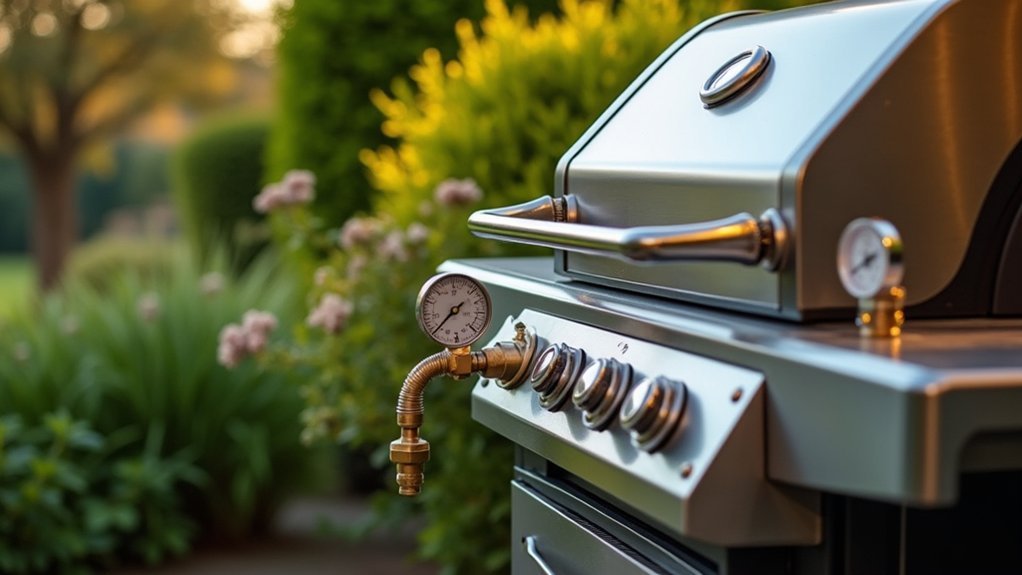
After completing the orifice and manifold replacement, proper gas line installation becomes your next priority for safe operation.
You’ll need to verify your natural gas pressure using a manometer, verifying it reads 6-7 inches of water column for ideal performance. Always use manufacturer-approved conversion kits and components during gas conversions to maintain safety standards.
Once you’ve connected the natural gas line, conduct a thorough leak test by applying soapy water solution to all connections. Watch for bubbles that indicate potential gas leaks.
Before starting any work, confirm your natural gas line is turned off and check local codes governing natural gas installations. Following proper regulations guarantees safe installation while preventing legal complications and safety hazards.
Perform Thorough Leak Detection After Conversion
After completing your propane-to-natural gas conversion, you’ll need to test every connection for potential leaks using a simple soapy water solution.
Apply the mixture to all gas fittings and joints, then look for bubbles that indicate escaping gas.
Focus your attention on the regulator connections, valve fittings, and any newly installed components where leaks are most likely to occur.
Soapy Water Testing
Once you’ve completed your propane-to-natural gas conversion, you’ll need to perform a critical safety check using soapy water to detect any gas leaks.
Before starting your leak test, verify your propane grill is turned off and the natural gas line is disconnected for maximum safety.
Create a mixture of soap and water, then thoroughly apply it to all connections and joints, including the regulator and hose.
Watch carefully for at least 30 seconds—bubbles will form wherever gas is escaping. If you spot any bubbling, immediately tighten the connection or replace the faulty component.
Don’t use your grill until you’ve resolved all leaks. Repeat this test regularly, especially if you notice unusual odors or performance issues.
Monitor Gas Connections
The successful conversion of your propane grill to natural gas requires ongoing vigilance with gas connection monitoring to confirm safe operation.
You’ll need to monitor gas connections regularly, especially during initial uses when new fittings may shift or loosen.
Perform a thorough leak test by applying soapy water to every connection point—bubbles indicate dangerous leaks requiring immediate attention.
Ascertain all connections are tightened securely, as minor gaps create serious safety hazards.
Use a manometer to verify proper gas pressure at your outdoor line, which should measure 6 to 7 inches of water column for peak performance.
Follow local codes and regulations throughout this process to maintain compliance and operational safety.
Test Performance and Adjust Settings for Optimal Operation
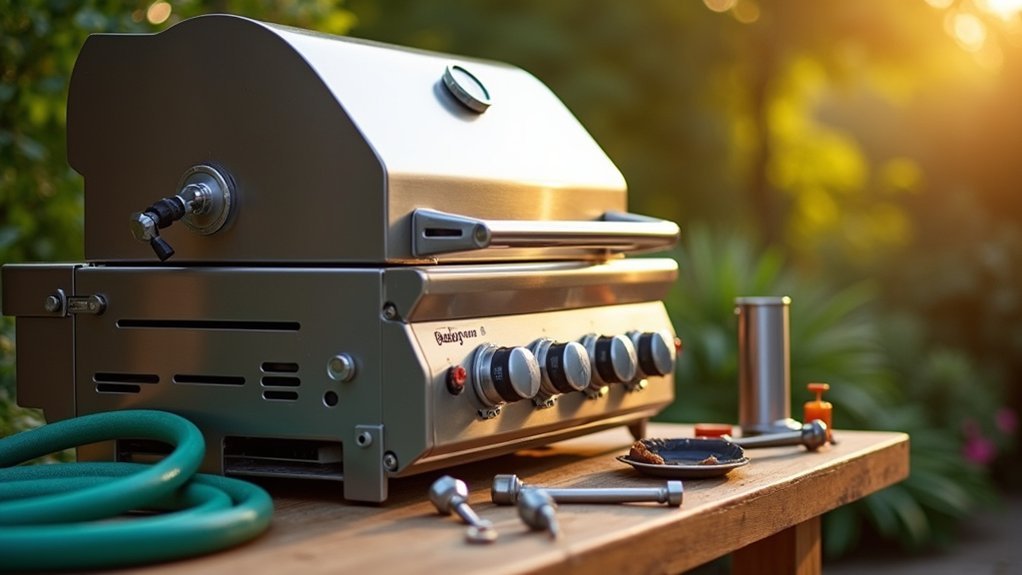
When you’ve completed the conversion process, testing your grill’s performance becomes essential for safe and effective operation.
Start by observing the flame color and strength – you’ll want to see blue flames that burn steadily, indicating proper combustion and gas flow. If flames appear yellow or orange, adjust settings accordingly.
Since natural gas typically requires different BTU outputs than propane, you’ll need to test performance by adjusting control valves to achieve your desired heat levels.
Conduct a thorough leak test using soapy water on all connections, watching for bubbles that signal leaks.
Familiarize yourself with new cooking times and temperatures, as natural gas may heat differently.
Regular inspection and cleaning of burners guarantees peak performance.
Frequently Asked Questions
Is It Worth Converting a Propane Grill to Natural Gas?
Yes, if you’ve got an existing natural gas line and your grill’s compatible. You’ll save money on refills, enjoy continuous fuel supply, and conversion kits cost only $50-80.
What Do I Need to Convert a Propane Grill to Natural Gas?
You’ll need a conversion kit specific to your grill model, basic tools like wrenches and screwdrivers, a manometer for pressure testing, and soapy water for leak detection after installation.
Is a Regulator Needed for a Natural Gas Grill?
Yes, you’ll need a regulator for your natural gas grill to maintain proper pressure between 3-7 inches water column. Many grills include built-in regulators, but check your owner’s manual to confirm requirements.
Can a Propane Weber Grill Be Converted to Natural Gas?
You can convert some Weber propane grills to natural gas using manufacturer-approved conversion kits, but Weber discourages conversions due to safety risks. Check your manual for model-specific availability and use professional installation.
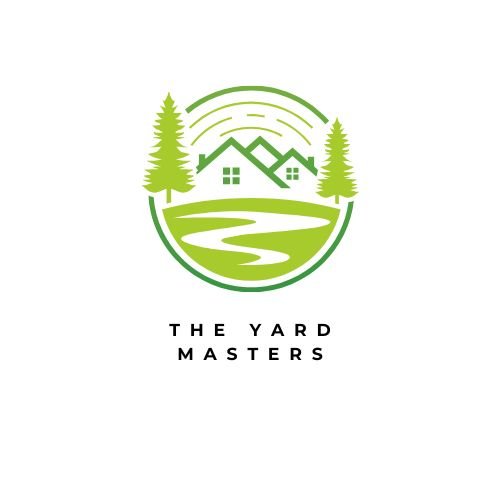
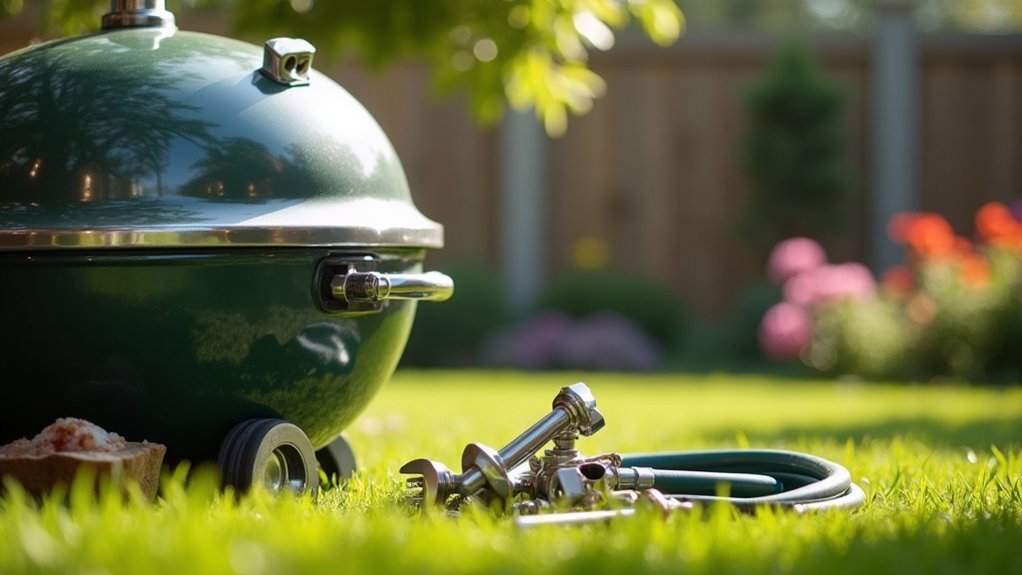


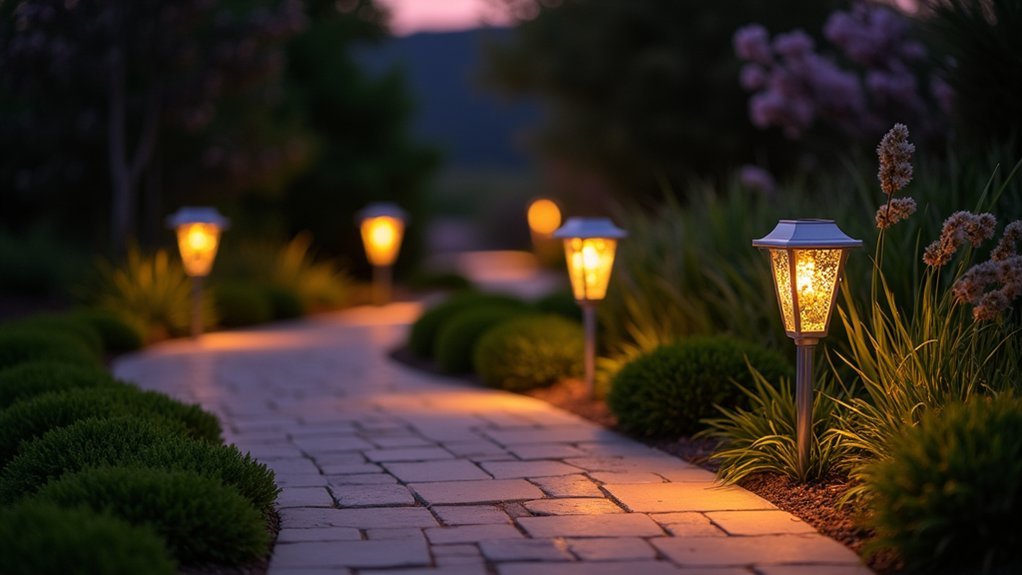
Leave a Reply